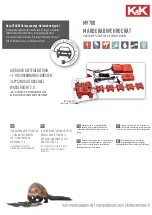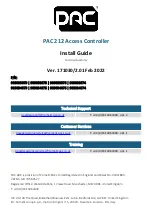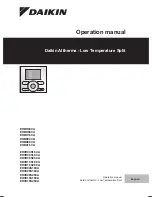
IOM-DA8
12
4. Diaphragm continually breaks (steam service regulators).
Possible Causes
Remedies
A. Stem seals, which protect fluorocarbon elastomer in
diaphragm assembly, may have deteriorated.
A. Replace with new stem seals.
B. Diaphragm nut may not be torqued to proper value.
B. Confirm torque value in accordance with Section VII, paragraph
E-15.
C. Diaphragm too stiff causing it to crack in service.
C. Follow proper preforming and air pressure to underside of dia-
phragm techniques during diaphragm installation in accordance
with Section VII, paragraph F-9.
5. Diaphragm continually breaks (all regulators).
Possible Causes
Remedies
A. Differential pressure across diaphragm may have
exceeded limits.
A. Reference limits as recorded in technical bulletin DA8-TB, as
well as where the various pressures are acting.
• Fluid (with fluid properties)
• Range of flow rate
• Range of inlet pressure
• Range of outlet pressure
• Range of fluid temperature
• Range of ambient temperature
Pressure readings should be taken at every location that pressure plays a role - i.e., regulator inlet (as close as
possible to inlet port), regulator outlet (as close as possible to outlet port), etc.
Following are some of the more common com plaints along with possible causes and remedies.
SECTION VIII
Possible Causes
Remedies
A. Sticking of internal parts.
A. Remove internals, clean and if necessary, replace.
B. Load changes are too quick for system.
B. Convert to external sensing (if necessary) and install an
orifice or needle valve in external sensing line.
C. Oversized regulator.
C. Check actual flow conditions; resize regulator for minimum
and maximum flow; if necessary, replace with smaller regulator.
D. Unstable loading pressure.
D1. Stabilize loading pressure; i.e. pump, control valve, etc.
D2. Air in loading piping. Vent spring chamber.
Possible Causes
Remedies
A. Air trapped under diaphragm.
A. Install valve on external sensing port and bleed off air.
(Install regulator upside down to help prevent reoccurrence.)
2. Erratic regulation, instability or hunting (liquid service).
1. Erratic regulation, instability or hunting.
Possible Causes
Remedies
A. Debris in trim preventing movement.
A. Clean unit of debris.
B. Undersized regulator.
B. Check actual flow conditions; resize regulator for minimum and
maximum flow; if necessary, replace with larger regulator.
C. Mal-adjusted adjustment screw.
C. Turn adjustment screw CCW.
3. Upstream pressure too high.




































